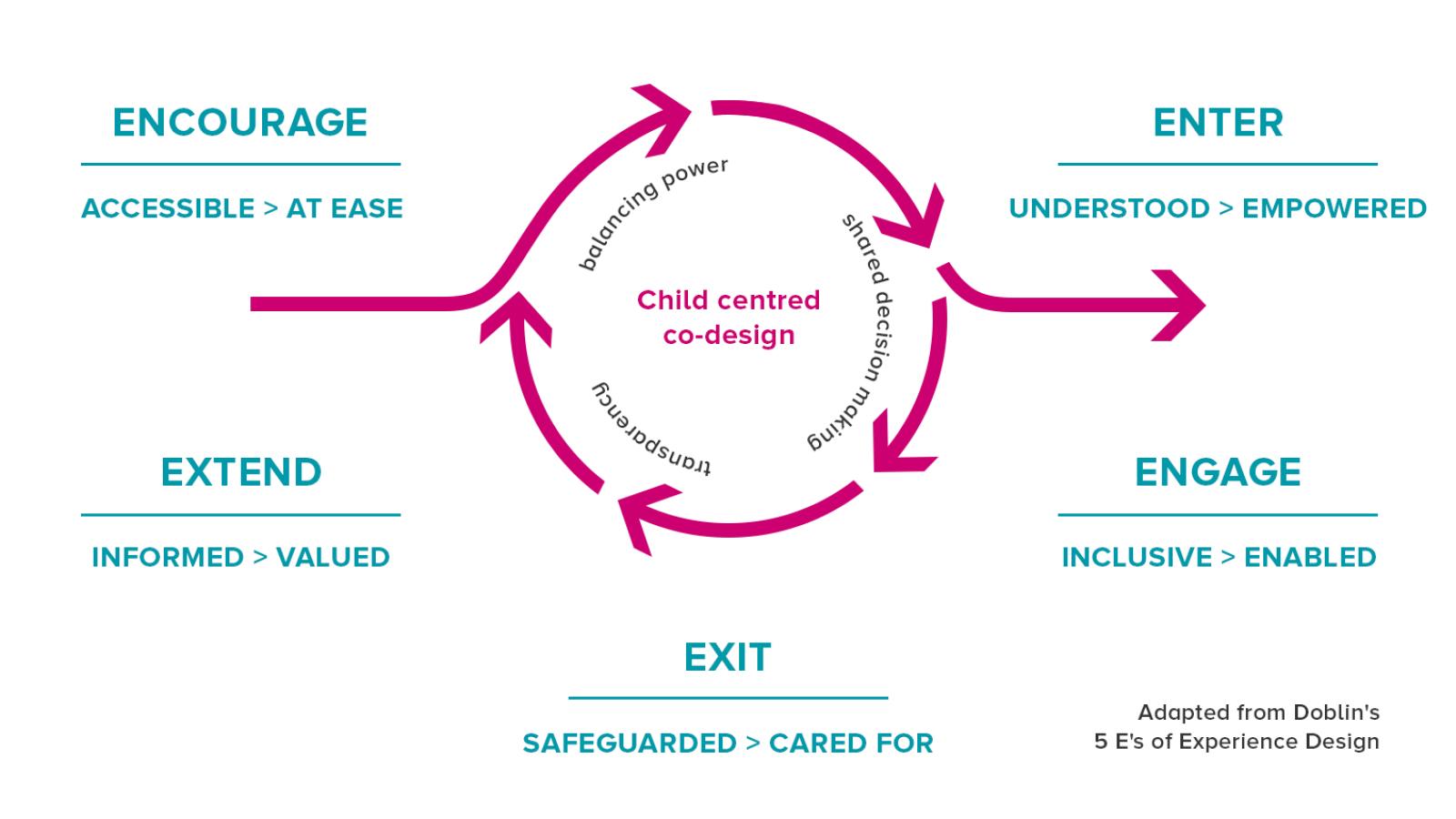Every good service starts by understanding young people’s needs. We need young people and children to feel empowered to tell us what they really think.
As the Service Design team at Barnardo’s, we know it’s not always easy to run design sessions which are truly child-focused. To help make our sessions as child-friendly as they can be, we apply Doblin's experience design framework: the 5 Es.
We use the 5 Es to consider every stage of a design process from young people’s eyes.
We’ve also developed child-centred tools and materials to use within the framework. These help us design research for new products, new services, and new approaches for supporting children.
You’re free to use these principles, framework and materials in your own work if you’re an experienced designer. Before you start you’ll need to have knowledge and experience of how to work safely with young people. For example, we assume you already have established safeguarding plans, and safe and appropriate session content.
The 5 Es framework
There are 5 stages to this approach:
1. Encourage
The first step is to invite young people to take part in our research. We’ve redesigned consent forms so that young people truly understand what they’re being asked.
Get information and resources on encouraging young people to take part.
2. Enter
Setting the tone of the session and ensuring genuinely informed, voluntary consent is critical. We’ve created materials to remind young people that they can change their minds if they’ve already given consent. We also have flashcards to help participants ask questions and signal how they’re feeling.
Get information and resources on entering a design research session.
3. Engage
Designing activities which keep young people motivated and engaged is the next challenge. We’ve created a template for research practitioners, which they can to help design sessions that are fun, well timed and ethical.
Get information and resources on engaging young people in research.
4. Exit
The last moments in a research session can have the greatest impact for young people, especially if they’ve shared difficult experiences. We’ve created session guide templates to help practitioners end sessions sensitively and positively. We’ve also designed thank you packs for participants.
Get information and resources on exiting a design research session.
5. Extend
If young people have entrusted us with their knowledge, experiences and opinions, it’s only fair that we share with them how we’ve used that information. We’ve developed a short booklet template to help practitioners tell young people the outcomes of the research.
Get information and resources on extending our engagement with young people.

